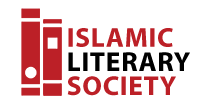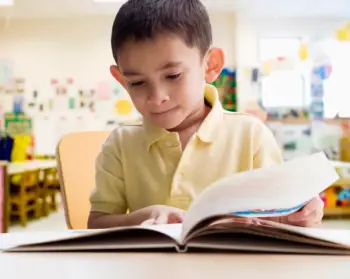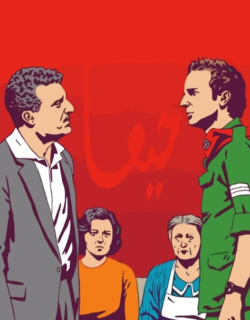Introduction
Once a medical college professor said to his students: “If you want to make good money as a physician, choose paediatrics as a career.” When children fall sick, parents generally become frantic in their attempts to provide medical care for them. They take their unwell children to paediatricians for advice and are ready to spend to the limit of their capacity. In other words, there is a heightened concern among parents about the (physical) health of their children.
But what about children’s intellectual needs? Here comes the question of children’s literature.
Many lament the decline in their children’s reading activities, while others worry about the types of books that grab the attention of younger family members. Unfortunately, for children’s reading materials, Muslims have largely been depending on books produced by authors of non-Islamic background. Children’s literature as a whole is growing exponentially around the world, but not so in Muslim societies. This has led to stagnancy and inadequacy of literature for Muslim children.
The best way to cultivate children’s reading habit is to produce high-quality reading materials for them. This will also protect them from potential dangers of unhealthy content. The anecdotal reflections mentioned below will shed more light on this.
Random anecdotal accounts
Once we visited a family and found there a book meant for children. I sat down with my two daughters and encouraged them to read it. They flipped through some pages and then put it aside. There was a look of boredom and disinterest on their faces. The author of the book was a prominent Islamic scholar. He wrote it in all sincerity, appreciating the crying need for children’s literature grounded in Islamic values and traditions. Undoubtedly, he had the passion for children’s literature but did not seem to have the right training to produce it. Later my daughters got hold of sets of children’s books by non-Islamic writers, which they read avidly and voraciously.
As a PhD student, I lived in the British city of Portsmouth in the 2000s. During those years, I often visited London for academic and other reasons. Some Muslim parents in Portsmouth used to ask me to buy from London Islamic books for their children. That led me to London Muslim Centre in East London where there are bookshops that sell Islamic reading materials for different age groups. I used to buy children’s books from whatever choices were out there. Abdul Wahid Hamid’s two-volume work Companions of the Prophet (1995) was usually on the list of purchases.
In the recent past, during one of my visits to the UK in 2019, I went to London Muslim Centre. This time it was to buy books for my daughters. I browsed through the bookshops but saw very few new arrivals. That is to say, in the decades-long gap, the bookstores at London Muslim Centre didn’t have many new Islamic titles for children. That was a disappointment for me. Perhaps, it is also a reflection of the condition of intellectual production in Muslim societies. Muslims today lag far behind other major religious communities in educational and intellectual achievement. This is more so in the field of children’s literature than in other areas of intellectual activity. The reason may lie in their perception of, and attitude to, books for children.
Is children’s literature important?
Compared to adults, children are often considered of lesser importance. However, in Islam, the adult-child relationship is understood in terms of respect and responsibility, not superiority and inferiority. As Prophet Muhammad (peace be upon him) is reported to have said: “He is not of us who is not compassionate to our youngsters and shows no respect to our elders.”
Children are seen as a vulnerable group. They are often constructed as dependent and seen as a burden. Therefore, the need for their reading materials is also considered less important, especially among today’s Muslims. This is conceivably one reason for the relative paucity of children’s literature among this religious group. If this genre of literature is to thrive in a society, it needs to be given the right importance. As the American writer Clifton Fadiman (1976: 11) argues:
It is apparent that the esteem in which any vocation is held affects its development. If children’s literature is not generally felt to be an identifiable art, important in its own right, potentially creative minds will not be drawn to it, and it will languish or become a mere article of commerce.
Compared to general literature, children’s literature is limited in scope, breadth and coverage. However, that is not to say that children’s imagination is limited or their mind is crippled. The imagination of children is undeniably rich and lively. It is the job of the writers of children’s literature to understand it and to cater to its needs. The absence of children’s reading materials grounded in Islamic traditions and references has untoward consequences, which I discuss below.
Poor self-worth
Given the lack of literature with Islamic elements, Muslim children are routinely exposed to books of non-Islamic provenance. This phenomenon results in their poor self-worth. The British writer Fawzia Gilani-Williams was once the principal of an Islamic school in Canada. There was a story writing competition among the students at her school. Surprisingly, even though all participants were Muslims, none among eighty competitors employed Islamic symbols and traditions as ingredients of their stories. Except for three students, all of them gave their characters non-Muslim names and used settings generally not associated with Islam or Muslims (Gilani-Williams and Bigger, 2011: 3).
The story books Muslim children consume contain predominantly non-Muslim characters and description of non-Muslim people and places. Therefore, in their imagination, Muslims are non-existent in literature so cannot be characters in story books.
If Muslim children are to be given a strong sense of belonging to their community and dissuaded from harmful reading materials, the alternative (Islamic) children’s literature must be of superior quality and higher value. The American writer Uthman Hutchinson’s series of children’s books Invincible Abdullah (1992) is a good example to show that Muslim names can be characters in stories. Fawzia Gilani-Williams also employs a comparable writing style in her works, such as, Cinderella: An Islamic Tale (2010), Snow White: An Islamic Tale (2012) and Sleeping Beauty: An Islamic Tale (2018). But the number of such writers and the volume of such literary works are far from adequate.
Who to blame?
If Muslims are reluctant or unable to produce children’s literature of higher quality, do they have the right to complain when their children are drawn to better-written materials whose content does not satisfy their expectations? Or do they believe that it is the responsibility of writers of other religious or ideological persuasions to protect Muslim children from negative outcomes emanating from books of wrong contents? Even if non-Muslim writers of good taste and sincerity seek to cater to the needs of Muslim parents, that may not meet the information or content needs of Muslim children.
Many Muslim parents keep their children from reading specific books they consider inappropriate for them. But this strategy does not protect their wards from falling prey to their own curiosity. They are drawn to available literature in both print and electronic forms. It is also true that many literary works produced by non-Muslim authors promote honesty, courage, fairness, discipline, hard work, respect, responsibility, justice and other Islamic values. But that does not compensate the need for Muslim writers to produce books for children. By the way, as opposed to the seemingly inert literary life of today’s Muslims, the Madinan society of the Prophet was full of artistic activities.
Children’s literature in early Islam
Muslims in today’s world may stand in need to be persuaded about the importance of children’s literature. However, it was not so in the early days of Islam. The historic migration of Prophet Muhammad and his followers from Makkah to Madinah opened a flood of happiness for the people of the latter. The pleasure that poured over Madinah upon his entry was reflected in the famous song its children sang to welcome him. The text of its lyrics has remained one of the best pieces of children’s literature.
Once Madinah became a Muslim city-state and the Prophet its religious and administrative head, it faced military challenges from Makkah. In the first major encounter, the Battle of Badr, the Islamophobes of Makkah suffered a humiliating defeat. Some of them were captured, and the Prophet allowed the prisoners of war to redeem themselves by teaching the art of writing to the children of Madinah.
All these suggest that intellectual exercise and literary work were highly valued in the early days of Islam. As Islam spread to various parts of the world, it inspired and influenced literature in different languages. However, children’s literature in today’s Muslim societies does not seem to have gained the momentum that it deserves.
Conclusion
It is important that educated Muslims rise to the occasion and produce competitive children’s literature, not only with Muslim names and settings but also with Islamic elements and cultural references. A common tendency among many writers of Islamic orientation is to rush to preach and sermonize. Robert A. Williams quotes Uthman Hutchinson who observes that Islamic children’s books are “preachy and written in poor English and not at all inviting to kids” (90).
The beauty of diction, refinement of style and profundity of thought make a book readable. Conversely, using the wrong writing style gets in the way of conveying ideas and expressing emotions. Possessing the best knowledge does not necessarily make one a good author. Employing sophisticated (adult) language in books for children may frustrate the purpose for which they are written. For example, this essay is meant for mature readers and will likely be shunned by children even though it is written about their reading materials.
In this essay, I have been mainly concerned with “writers who believe in and are committed to the Islamic world-view” (Williams, 2020: 89). It is primarily their responsibility to produce readable and effective literature for Muslim children. Conventional children’s literature may not necessarily alienate Muslim children from their religion. However, exposure to books with wrong contents may lure them to consumerism, hedonism, individualism, selfishness and materialism. Such reading materials may invite them to seek happiness in senseless pursuits of worldly pleasures and other forms of excesses and adverse social trends. By ignoring the need for children’s literature, the Muslim community as a whole is shrouded in obscurity and in a pall of despondency. The time to take heed of this message is now.
References
Fadiman, Clifton. 1976. “The case for a children’s literature.” Children’s Literature, 5(1): 9-21.
Gilani-Williams, Fawzia and Stephen Bigger. 2010. “Muslim Pupils, Children’s Fiction and Personal Understanding.” ALMAS International Research Journal, 12(1):1–9.
Williams, Robert A. 2020. “Passing on religion as identity? Anglo-western Islamic children’s literature and Muslim acculturation.” Journal for Cultural Research, 24(2): 85-100.




Add Comment